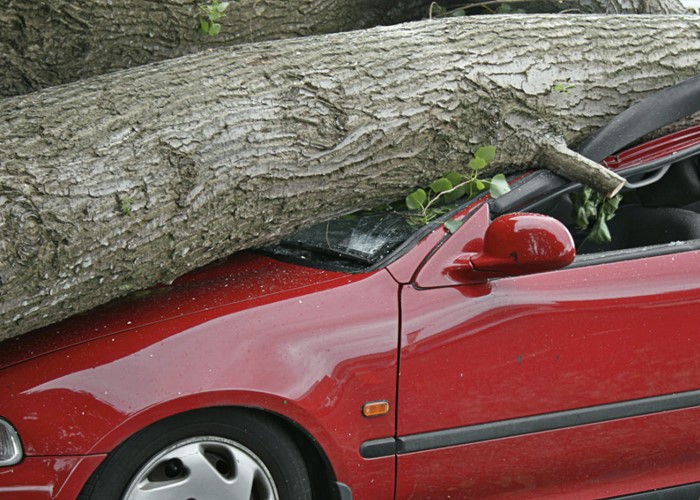Can insuring your excess cut your car insurance premium?

A new partnership reckons some drivers can slash the cost of their car insurance by also insuring the excess on their policy. We take a closer look.
The trials and tribulations of young drivers are well documented. Those aged between 17 and 20 can be charged thousands of pounds for car insurance, in some cases more than the car is even worth.
One way to reduce a car insurance premium – whatever your age – is to increase the 'excess' you’d have to pay in the event of a claim. But that potentially leaves drivers with a massive bill if they have an accident.
Bought By Many, in partnership with the XS Cover Company, says the answer is to buy separate excess insurance.
What’s the excess?
An excess is a sum of money your insurance company requires you to pay towards the cost of making a claim.
When you buy car insurance the excess is usually split into two parts:
- The compulsory excess. This is non-negotiable and depends on your age, the type of car you have and the type of claim.
- The voluntary excess. You choose this yourself.
Choosing a higher voluntary excess will help bring down the cost of your car insurance premium because the insurer won't have to pay out so much in the event of a claim.
However, it means you’ll have to put your hand in your pocket if you have an accident. For young drivers at university or on entry-level salaries paying this amount – normally up to £750 – can be a struggle.
Insuring the excess
Bought By Many allows drivers to increase their excess to as much as £2,000 with an insurer to reduce costs, but offset the risk of having to pay this amount by insuring it with the XS Cover Company instead.
It says young drivers can save hundreds of pounds this way.
The table below outlines example savings based on a 19-year-old student who’s been driving for one year and is insuring a 1-litre Vauxhall Corsa.
|
Insurer |
Compulsory excess |
Cost of insurance with £250 |
Cost of insurance with £750 voluntary excess |
Difference |
Cost of insuring total excess |
Saving |
|
Admiral |
£250 |
£2,628 |
£2,353 |
£275 |
£40 |
£235 |
|
Elephant.co.uk |
£250 |
£2,683 |
£2,400 |
£283 |
£40 |
£243 |
|
Co-op |
£400 |
£3,259 |
£2,824 |
£436 |
£40 |
£396 |
Table: Brought By Many
As you can see some young drivers will be able to save almost £400 this way.
Potential pitfalls
Insuring the excess could potentially save young drivers several hundred pounds, but there are a couple of possible downsides.
Firstly, if you need to make a claim on your car insurance, you’ll need to pay your excess as normal, but then claim it back through your excess car insurance provider.
Secondly, you’ll have to make two claims, rather than one.
Why are young drivers charged so much anyway?
According to the Association of British Insurers (ABI), drivers under 25 pay an average of nearly £2,000 in insurance each year. Up until the EU gender directive came into force last December, young men were typically charged even more than this.
Statistically young drivers have more accidents than everyone else, male drivers in particular. And if you’ve ever watched BBC3’s Barely Legal Drivers you can see why – youth and inexperience can be a fatal combination.
Who are these companies?
Bought By Many helps people club together into social buying groups to get a better deal on insurance – the more people who buy, the cheaper it becomes.
Excess cover for young drivers is just one of the groups it puts together. Others include travel insurance for over 65s, home insurance in flood risk areas, and horse riding insurance for children.
The XS Cover Company does as the name suggests: covers the excess on various types of insurance policies. It only sells through brokers, not directly to people like you and me, hence the partnership with Bought By Many.
Other options for young drivers
Excess insurance is the latest in several initiatives which aim to reduce the cost of insurance for young drivers.
A popular concept is telematics or “black box” technology. Now offered by several insurers, this involves fitting a black box in the young driver’s car which monitors how fast and safely they drive and at what time of day. The better the driver you are, the lower your insurance. Read How a black box can cut the cost of your car insurance.
Similarly, Aviva has launched a smartphone app which tracks your driving habits and can help cut your car insurance bill. Check out Aviva Drive car insurance app reviewed for more.
More on car insurance:
Aviva Drive car insurance app reviewed
How a black box can cut the cost of your car insurance
Most Recent
Comments
-
Yes, speed limits are there for a reason, but let us not forget that speed limits are often challenged, both for increasing as well as decreasing. I have seen National Speed Limit roads reduced to 40mph, or even 30 mph, and visa versa. There are campaign groups for both increasing the speed limit and reducing the speed limit on many roads. Also, we must remember that the 70mph speed limit was introduced back in 1965, when vehicles struggled to get to these speeds. In fact, my old Escort used to rattle at 66mph. Modern cars can easily exceed this speed limit by a big margin. In fact, many modern cars can easily do twice this speed. I am not advocating doing twice the speed, but 70mph does seem somewhat restrictive, considering how modern vehicles perform. I should also state that if there is an issue with driver driving standards, we only have our leaders to blame. People have to pass a test set out by government to be licensed to drive, then appear to do whatever they want. Maybe if the government introduced a harder test, followed by intermediate tests, especially after accidents or incidents, then maybe so many would not be tempted to break the law. I find it amazing that if you drive LGV or PSV, you need to prove your competence, yet if you drive a pocket rocket, you only need to prove your ability once, and then only need to re-apply for your license when you reach 70 years of age. There are plenty of good drivers on our roads. People who use their indicators, or can reverse without drama. People who are genuinely courteous to other road users, including tractor drivers who pull over to let faster moving vehicles past. Then you get the arseholes who overtake to get one vehicle ahead, or don't indicate, especially when you are waiting to join a round-a-bout, and they pull off just before your junction, or drive their tractor the full length (7 miles) between Holbeach and Sutterton without pulling in once to allow everyone else to pass. (Who can afford to waste all that time travelling at 17mph along a 7 mile stretch of road? Chill out and wait? Really?) I should also point out that travelling on our roads serves just one purpose, and that is to get us from A to B. Who wants to spend more time than necessary travelling. Time is money, and while safety has to be a major component of travelling, needless waste of time should not be a major component. Creating a smooth flowing road system should be the mandate of all governments. After all, we waste fuel sitting at traffic lights, or in slow moving traffic. We can also waste fuel travelling too fast, but then that is our choice to spend extra on fuel. Given the choice between travelling at 70mph (not an economic speed) or travelling in stop start traffic (also not an economic speed), I know which I would prefer.
REPORT This comment has been reported. -
bigger roads, with everyone travelling at the same speed, get ride of them tractors ( there only on the road for fun, not doing any work like the rest of us!) trucks doing 60mph with 40tonnes .........! and no one will over take them? take a deep breath and get real, the speeds are there for a reason, a lot of reasons, sometimes you just have to chill out and wait. and car insurance we will just have to have less power in our cars and learn more care.
REPORT This comment has been reported. -
A report commissioned by the Labour party under Blair/Brown, and which was buried by them, showed conclusively that speeding wasn't a major factor in accidents. Several points were hi-lighted as being contributory factors in accidents such as. Failure to pay attention to weather conditions. Driving too close to the vehicle in front. Failure to read road conditions. Aggressive behaviour. Also hi-lighted in the report was the simple fact that collisions between motorists and pedestrians were often caused by pedestrians not paying attention when crossing the road. One of the biggest factors in a pedestrian and vehicle collision was the mobile phone. Texting while trying to cross a road creates a lethal situation. Another part of the report stated that more collisions happened some stretches of road when speed cameras are first installed, created due to a knee jerk reaction on seeing a camera, resulting in sudden braking. Traffic tends to flow smoother when there are no such surprises in store. A backlog of traffic is often caused by LGVs who are restricted to 40mph on a single carriageway, even though the speed limit can be 60mph. While I can understand the governments idea that heavy vehicles should be slower to allow shorter breaking distances, if LGVs could go with the flow of other road vehicles, less accidents would be caused by drivers trying to overtake these slower vehicles. Also, if roads were widened to allow safer overtaking, or converted into dual carriageways, less accidents would occur. There are too many A roads that carry heavy traffic on a single carriageway (A16 and A17 where I live, which also carries farm traffic adding the the misery of the daily commute; no fun travelling at 17mph or less, because a tractor is at the head of a queue).
REPORT This comment has been reported.
Do you want to comment on this article? You need to be signed in for this feature









01 July 2013